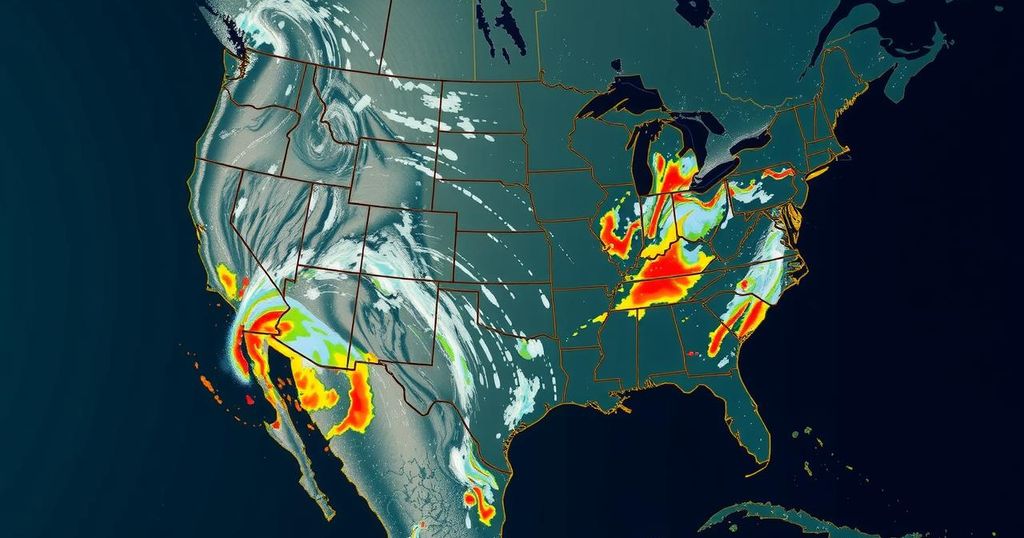2024 Atlantic Hurricane Season Sees Unprecedented Storm Activity

The 2024 Atlantic Hurricane Season ended with significant storms impacting the U.S., including 18 named storms and 11 hurricanes. Major hurricanes, particularly Beryl and Helene, caused widespread devastation, with fatalities exceeding 250 and damages estimated at over $50 billion. Texas received $1.6 billion in federal assistance amidst the turmoil.
The 2024 Atlantic Hurricane Season has officially concluded, highlighting a particularly intense year characterized by numerous significant storms impacting the United States. This season witnessed the formation of 18 named storms, among which 11 escalated into hurricanes, including five major hurricanes. While the overall storm count was lower than preliminary forecasts, the number of major hurricane landfalls in the U.S. exceeded normal expectations, as noted by Eric Berger, a prominent meteorologist from Space City Weather.
The United States faced substantial repercussions from storms this year, eclipsing typical patterns with three hurricanes making landfall. Notably, Hurricane Beryl struck the Houston region in July, causing widespread destruction and leaving millions without power for an extended duration, resulting in over 40 fatalities. Following this tempest, the Atlantic went through an unusual period of calm during late summer, which is generally prone to heightened hurricane activity.
However, the respite was short-lived. Hurricane Helene wreaked havoc along the East Coast at the end of September, resulting in the deaths of more than 200 individuals across several states, including North and South Carolina, Georgia, Florida, and Virginia. Shortly thereafter, on October 9, Hurricane Milton struck Florida as a formidable Category 3 storm. Cumulatively, these catastrophic events claimed at least 250 lives and inflicted damages estimated at around $50 billion.
In response to the devastation, Texas received approximately $1.6 billion in federal aid, following two Presidential Disaster Declarations stemming from storm-related emergencies in May and subsequently in July after Hurricane Beryl.
The Atlantic hurricane season typically runs from June 1 to November 30, encompassing a period during which tropical storms and hurricanes are most prevalent. The 2024 season brought an unprecedented level of activity, with a greater number of major hurricanes making landfall in the United States than is normally expected in a single year. Meteorological experts monitor these patterns closely to inform preparedness and response strategies, highlighting the importance of rapid federal assistance in the wake of such disasters. The severity of the storms this year emphasizes the need for ongoing research into hurricane forecasting and climate change implications.
In summary, the 2024 Atlantic Hurricane Season has proven to be exceptionally active, with the U.S. experiencing more major hurricanes than is typical. The notable devastation wrought by storms such as Beryl, Helene, and Milton underscores the critical need for effective disaster management strategies and timely federal support. As communities recover from these disasters, the ongoing discourse around climate change and storm intensity will continue to shape future preparedness efforts.
Original Source: www.houstonpublicmedia.org








